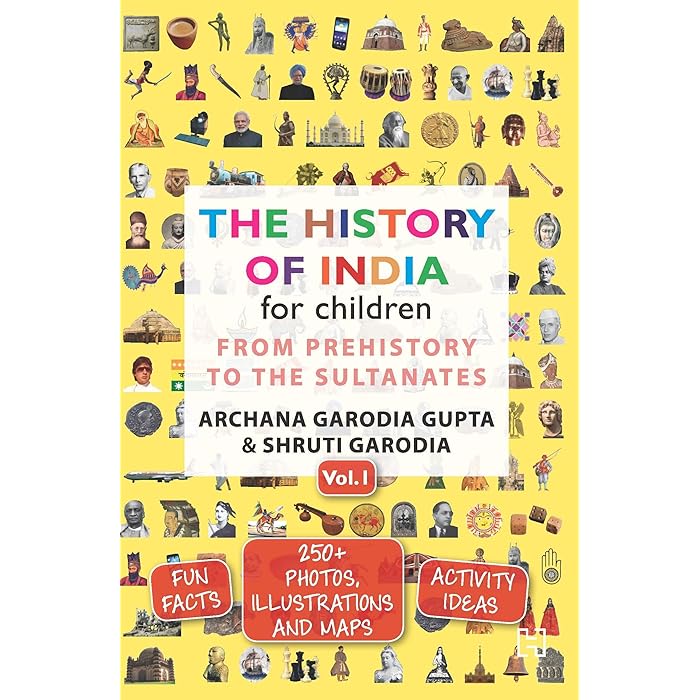Description
**The History of India for Children – Vol. 1: From Prehistory to The Sultanates** is a comprehensive book that introduces young readers to the rich and diverse history of India. It covers the ancient and medieval periods, focusing on the key events, personalities, and transformations that shaped the Indian subcontinent. Below is an overview of the content:
### **1. Prehistory and the Early Civilizations:**
– **Prehistoric India:** The book starts with India’s earliest history, going back to the Stone Age. Children learn about early human life, including the hunter-gatherer societies, the development of tools, and the emergence of agriculture.
– **Indus Valley Civilization:** One of the world’s earliest urban civilizations, the Indus Valley Civilization (3300–1300 BCE), is highlighted. The cities of Mohenjo-Daro and Harappa, known for their advanced planning, drainage systems, and trade networks, are described in detail.
### **2. The Vedic Age:**
– **Aryan Migration:** The book explains the arrival of the Indo-Aryans around 1500 BCE and their impact on the subcontinent. It introduces the Vedic texts, the beginnings of Hinduism, and the establishment of early kingdoms.
– **Vedic Culture:** The social structure, rituals, and philosophy of the Vedic period, including the composition of the Vedas and the concept of Dharma, are explored.
### **3. The Rise of Kingdoms and Empires:**
– **Mahajanapadas:** The book introduces the rise of powerful kingdoms (Mahajanapadas) around 600 BCE. Key kingdoms such as Magadha and Kosala are mentioned, and the development of republicanism and monarchy is discussed.
– **The Mauryan Empire (c. 321–185 BCE):** The reign of Emperor Ashoka, his conversion to Buddhism, and the spread of his message of peace and tolerance across India are important highlights of this section.
### **4. The Gupta Empire (c. 320–550 CE):**
– The Gupta period is known as the “Golden Age” of India. The book covers advancements in science, mathematics (including the concept of zero), art, literature, and political stability under rulers like Chandragupta I and Samudragupta.
### **5. The Sultanates of Delhi (1206–1526):**
– **Delhi Sultanate:** This section introduces the rise of Islamic rule in India, starting with the establishment of the Delhi Sultanate in 1206. The book covers the five major dynasties that ruled from Delhi (Slave Dynasty, Khilji Dynasty, Tughlaq Dynasty, Sayyid Dynasty, and Lodi Dynasty) and their contributions to the cultural and architectural landscape of India.
– **Important Leaders:** It discusses the reigns of important rulers like Qutb-ud-Din Aibak, Ala-ud-Din Khilji, and Muhammad bin Tughlaq.
– **Cultural Impact:** The period of the Sultanates saw the blending of Persian, Turkic, and Indian cultures, influencing architecture, language, and art.
### **Key Themes and Features of the Book:**
– **Simplified Language and Illustrations:** The content is written in an easy-to-understand language, making it accessible to children. The use of illustrations and maps helps visualize historical events and people.
– **Focus on Key Events:** Instead of overwhelming children with too many details, the book focuses on significant events and figures that shaped India’s early history, making it a concise and engaging read.
– **Interactive Elements:** The book may include questions or activities that engage young readers to reflect on the material and deepen their understanding of India’s history.





Reviews
There are no reviews yet.